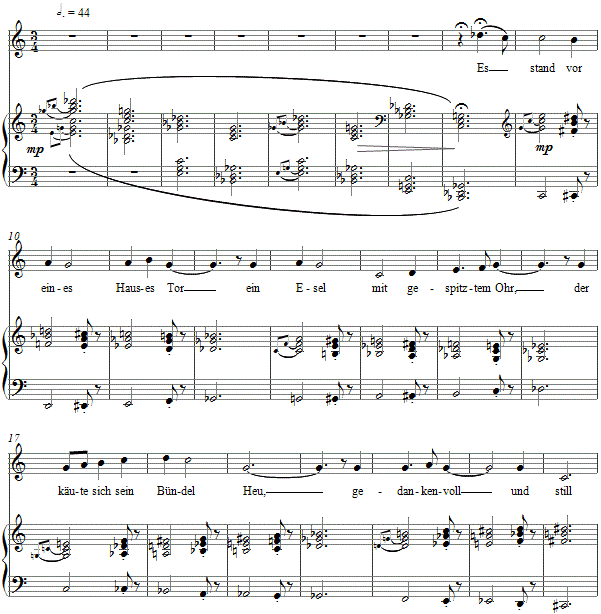Music and Texts of GARY BACHLUND
Vocal Music | Piano | Organ | Chamber Music | Orchestral | Articles and Commentary | Poems and Stories | Miscellany | FAQs
Ein Esel-lied - (2010)
Wilhelm Busch
for medium voice and piano
Es stand vor eines Hauses Tor
Ein Esel mit gespitztem Ohr,
Der käute sich sein Bündel Heu
Gedankenvoll und still entzwei. --
Nun kommen da und bleiben stehn
Der naseweisen Buben zween,
Die auch sogleich, indem sie lachen,
Verhaßte Redensarten machen,
Womit man denn bezwecken wollte,
Daß sich der Esel ärgern sollte. -
Doch dieser hocherfahrne Greis
Beschrieb nur einen halben Kreis,
Verhielt sich stumm und zeigte itzt
Die Seite, wo der Wedel sitzt.[ 3 pages, circa 2' 05" ]
Wilhelm Busch self-caricature
Standing before a house's door
Was a donkey, donkey-eared, what's more,
Which chewed over a bundle of hay,
Pensive, thoughtful on that day.
Then came along Neanderthals,
Two snotty little know-it-alls,
Who ridiculed the donkey there
With detestable words, all quite unfair.
And why they did this was quite clear,
To aggravate it did they jeer. -
But the old gray beast with experience keen
Turned its back upon that scene,
Remaining mute but with some class
It turned to show those fools its ass.
rhymed paraphrase by the composer
The picture begins with that lovely indigestible constellation of C and G flat majors, alternating as the gesture falls and wanes. An accompaniment rooted on C -- which the vocal line outlines with prejudice -- pits half-step descending and ascending lines such that the chromaticism is complete, yet palatable as it find its own harmonic fulcrum at the tritone. Additional verses alter the texture of the accompaniment as the "louts" enter the scene, with a final return after a short bridge regaining musical composure. A final hee-haw from our donkey ends this short setting by a master skeptic, the good, clever and most amusing Wilhelm Busch.
The score is available as a free PDF download, though any major commercial performance or recording of the work is prohibited without prior arrangement with the composer. Click on the graphic below for this piano-vocal score.

